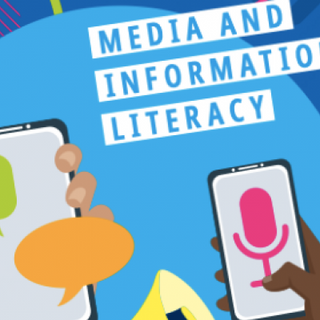How Media and Information Literacy Foster Innovative Cities Development in Nigeria? Agoro Adeola
- NSASA PRESS ORGANISATION

- Dec 2, 2022
- 3 min read
In a media and Information-saturated world, Information consumers tend to absorb whatever information spotted on the internet hook, line, and sinker without critiquing the source of the “intel” which is quite media-unsavvy and this gives rise to misinformation most of the time, if not all the time.
According to Daniel J. Boorstin, “Technology is so much fun but we can drown in our technology. The fog of Information can drown out knowledge.” The “fog “ mentioned in the above quote tends to reduce our visibility and cloud our judgment; making us see what the media just want us to see without questioning its credibility and this is the blanks or gaps media and Information literacy fill.
To be media literate is to critically understand the nature, techniques, and impacts of media messages, presentations, and productions. Information literacy on the other hand is the ability to access, evaluate and use Information from a variety of sources ethically.
However similar or different media and Information literacy (MIL) is, they are both geared towards one common goal which is to enable individuals in society to dissect media content to critically analyze them.
Media and Information literacy is a pre-requisite for enjoying fundamental human rights, in particular, freedom of expression and access to Information as stipulated in Article 19 of the UN’s Universal Declaration of Human Rights.
How then can Media and Information Literacy foster Innovative City Development in Nigeria?
In a democratic state such as Nigeria, Media and Information Literacy( MIL) can be employed as a democratic tool in ensuring the inclusion of her populace in democracy. After all, this is the whole essence of democracy. With the rate at which technology has gained momentum in Nigeria, one would reckon it has reached the whole populace.
But, the opposite is the case as digital literacy is yet to penetrate some regions and communities in Nigeria. And these communities are the target of Media and Information Literacy (MIL), the younger, people in particular.
First and foremost, for media unsavvy communities like these, the first strides toward equipping them with MIL irrespective of demographic location is intense public awareness about emerging technologies and their usage. With this, they get to be informed citizenry and can filter out biases encountered in media content.
Also, providing these local communities with technological tools such as computers, telephones, laptops, data projectors, etc. will make them engage actively and effectively with media and Information systems. Through this, the local community also learns to make remarkable contributions to the technology industry by innovating technology devices for society at large thereby leading to their development which serves as a booster for other local communities.
Moreover, introducing media and Information Literacy into school curricula at all educational levels will go a long way in equipping students with the competence and skills required to participate fully in society as an informed citizenry. Thorough knowledge of MIL also builds up their critical thinking skills and can let logic rule them instead of emotions.
Finally, Just like Financial Literacy, Media and Information Literacy is a life-long learning that should be pursued, and no human community regardless of population size should be left out. To ensure all-around societal development, local communities should be actively included and involved as there are so many potential-loaded people out there who with just a little push can bring about the desired change and development in society.







Comments